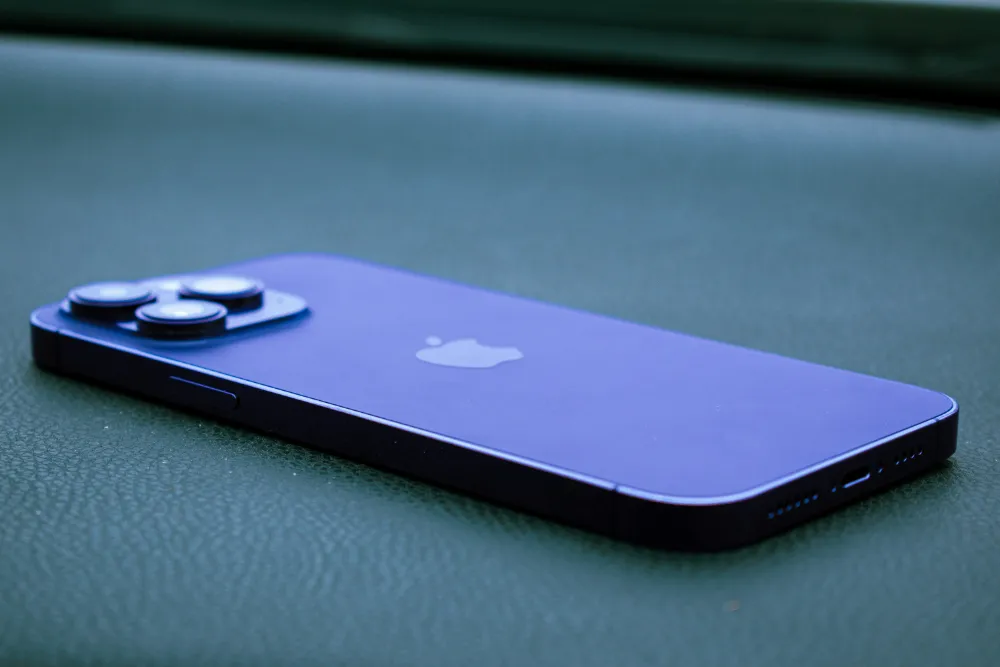eSIM
How Many eSIMs Can You Have on iPhone 14?
Quick answer: The iPhone 14 can store up to 8 eSIM profiles.
However, it’s important to note that while you can have multiple eSIM profiles stored on the device, you can only have two active eSIMs simultaneously.
Need An eSIM?
If you’re looking for an eSIM, check out our prepaid eSIM data plans for 200+ countries available.
Understanding eSIM Technology on iPhone 14
Your iPhone 14 can store multiple eSIM profiles at once—up to eight different cellular plans can live on your device simultaneously.
However, there’s an important distinction to make here: while you can store eight, you can only have two active eSIMs at the same time.
This dual-active capability means you can receive calls and texts on two different numbers without having to physically swap anything.
It’s particularly useful if you’re someone who juggles a work and personal line, or if you frequently travel internationally.
Setting Up Multiple eSIMs on Your iPhone 14
Adding multiple eSIMs to your iPhone is straightforward once you understand the process. Here’s how you can set up an eSIM:
- Go to Settings > Cellular > Add Cellular Plan
- From here, you have several options to activate your eSIM:
- Scan a QR code to activate your eSIM
- Use carrier activation or support eSIM Quick Transfer
- Convert a physical SIM to an eSIM using the built-in conversion tool
- Enter the information manually
When setting up your eSIMs, you’ll be prompted to label each one (like “Personal” or “Work”) and decide which line to use for default voice calls, messages, and cellular data.
Managing your eSIM profiles is done through the Cellular section of your Settings app. You can switch which lines are active, set your preferences for each line, and even remove eSIMs you no longer need.
Physical SIM and eSIM Combinations
This is where things get a bit region-specific.
If you purchased your iPhone 14 in the United States, you don’t have a physical SIM tray at all—your device is eSIM-only. However, if you bought your iPhone 14 in most other countries, your device includes both eSIM capability and a physical SIM slot.
For those with the physical SIM option, you can use a physical SIM and one eSIM simultaneously. This gives you the same dual-line functionality as using two active eSIMs at a time. You might find this useful during a transition period if you’re moving from a physical SIM to an eSIM setup.
The combination works seamlessly—your iPhone treats both connections equally, allowing you to specify which line to use for calls, messages, and data.
Advantages of Multiple eSIMs on Your iPhone
Having multiple eSIMs on your iPhone 14 opens up possibilities you might not have considered:
International travel has become much easier. You can keep your home carrier’s eSIM active while adding a local eSIM for prepaid data plans offered by many worldwide carriers. This typically saves you money compared to international roaming fees.
Separating work and personal communications becomes seamless. You can maintain clear boundaries between your professional and private life without carrying two phones.
You can optimize for coverage and cost. Perhaps one carrier has better coverage at your home, while another is superior at your workplace. With two active eSIMs at the same time, you can use both without compromise.
Testing new carriers or plans is simple. You can try a new service without giving up your existing number or plan.
Limitations and Considerations
While the eSIM functionality on iPhone 14 is powerful, you should be aware of a few limitations:
Not all carriers worldwide support eSIM technology yet. Before traveling, check whether local carriers at your destination offer eSIM options.
Managing two active eSIMs at the same time does impact battery life somewhat. Having two cellular connections active simultaneously requires more power than a single connection.
There can be occasional network compatibility issues when using certain carrier combinations. This is rare but worth noting if you experience unexpected connectivity problems.
Data usage can get confusing if you’re not careful about which line is set as your primary data connection. You might accidentally use the wrong plan for data-intensive activities.
Transferring eSIMs to a New iPhone
When you’re upgrading from your previous iPhone to your new iPhone 14, transferring your eSIM is usually straightforward. With iOS 16 or later, Apple introduced eSIM Quick Transfer, which makes moving your mobile plan on your iPhone much simpler.
During the setup process of your new iPhone, you’ll be prompted to transfer your eSIM. Your old iPhone needs to be nearby, unlocked, and connected to Wi-Fi for this to work. The transfer happens wirelessly and typically takes just a few minutes.
If you encounter issues with the automatic transfer, you can always contact your carrier for assistance. They can deactivate the eSIM on your old device and provide instructions to transfer your eSIM to your new device.
Troubleshooting Common eSIM Issues on iPhone 14
Even with Apple’s generally smooth implementation, you might encounter occasional issues with your eSIMs. Here are solutions to the most common problems:
Connection Problems
If your eSIM suddenly stops connecting to the network, first check if your carrier is experiencing outages. If not, toggle Airplane Mode on and off—this simple step often reestablishes the connection by forcing your iPhone to reconnect to the cellular network.
When that doesn’t work, restart your iPhone. This clears temporary software glitches that might be affecting your eSIM connectivity. For persistent issues, you might need to check for iOS updates, as Apple regularly improves eSIM functionality.
Activation Issues
If you’re having trouble activating an eSIM using a QR code, ensure you’re in an area with good Wi-Fi or cellular connectivity. Poor connections often cause activation failures. Also, make sure your camera lens is clean when scanning QR codes.
For activation issues with carrier apps, try closing and reopening the app. If that doesn’t work, contact your carrier directly—sometimes the eSIM needs to be reassigned to your account from their end.
eSIM Transfer Problems
When transferring an eSIM from your previous iPhone to your new iPhone, both devices need to be running iOS 16 or later for the smoothest experience. If the transfer fails, ensure both devices are nearby, connected to Wi-Fi, and have Bluetooth enabled.
If you’re still having trouble, your carrier can deactivate the eSIM on your old device and provide instructions to activate your eSIM on your new iPhone. This manual process takes a bit longer but is just as effective.
Dual eSIM Conflicts
Sometimes when using two active eSIMs at the same time, one line might take priority unexpectedly. To fix this, go to Settings > Cellular and check your Default Voice Line and Cellular Data settings. Make sure they’re configured according to your preferences.
If calls or messages are coming through on the wrong line, you might need to specify your preferred line for each contact in your address book. This gives you fine-grained control over which line is used for specific people.
Data Not Working on eSIM
If your cellular data isn’t working on an eSIM, first check if you’ve reached any data limits on your plan. Next, verify that the problematic eSIM is selected for cellular data in Settings > Cellular > Cellular Data.
For international eSIMs, ensure data roaming is enabled if required by your carrier. Some prepaid data plans need specific APN settings—check with your provider if you need to manually configure these.
Final Thoughts
The eSIM capabilities of the iPhone 14 represent the future of mobile connectivity. You’re getting a flexible system that can adapt to various usage scenarios, from international travel to maintaining separate work and personal lines.
With the ability to store eight eSIM profiles and keep two active eSIMs at the same time, your iPhone 14 offers significant advantages over physical SIM-only devices. As more carriers worldwide embrace eSIM technology, you’ll find even more ways to take advantage of this feature.
Have you considered how you might use multiple eSIMs on your iPhone? Whether it’s for travel, separating work and personal communications, or simply having a backup line, the possibilities are extensive and worth exploring.







